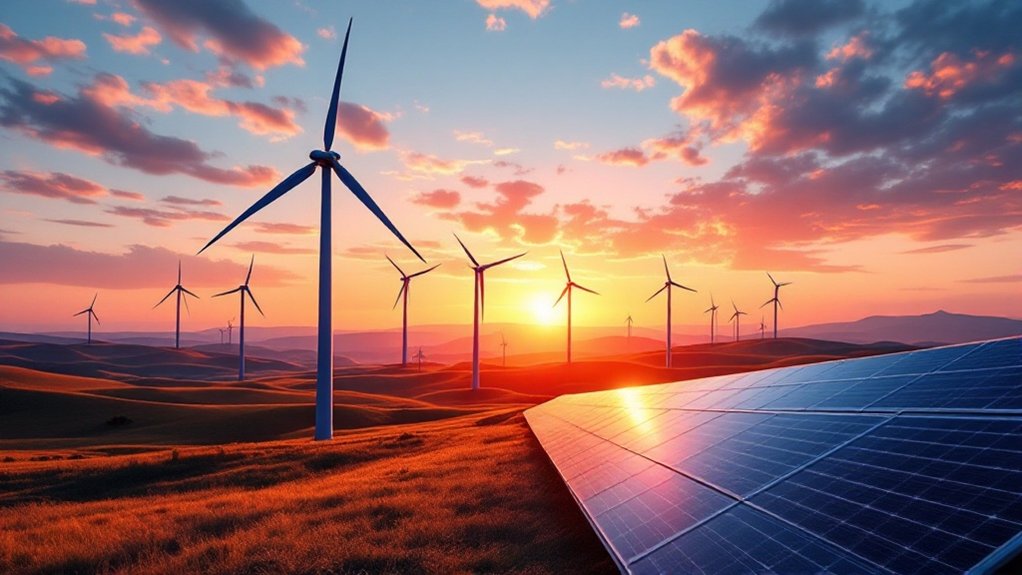
Exploring the Future of Wind Turbine Innovations
The future of wind turbine innovations presents significant opportunities for enhancing energy capture and efficiency. Advancements in design, materials, and technology promise to reshape the landscape of renewable energy. As the demand for sustainable solutions intensifies, understanding these emerging trends becomes essential. What specific innovations are on the horizon, and how might they transform the wind energy sector? The answers may reveal a more sustainable future than previously imagined.
The Evolution of Wind Turbine Design
As the demand for renewable energy sources has increased, the evolution of wind turbine design has become a focal point in engineering innovation. Early wind turbines were simple structures, often with limited efficiency and capacity. However, advancements in aerodynamics, materials, and technology have led to the development of larger and more efficient turbines. Modern designs feature taller towers and longer blades, allowing for greater energy capture from wind at higher altitudes. Additionally, the integration of computer modeling and simulation has enabled engineers to optimize blade shapes and turbine placement. Innovations such as vertical-axis turbines and floating offshore systems are expanding the potential for harnessing wind energy in diverse environments. Collectively, these advancements contribute to the growing viability of wind energy as a key component of sustainable energy solutions. Moreover, the renewable energy sector is a significant source of job creation, underscoring the economic benefits of these innovations.
Advanced Materials for Enhanced Durability
In the pursuit of enhanced durability for wind turbines, the use of lightweight composite materials has gained significant attention. These materials not only reduce the overall weight of turbine components but also improve performance and efficiency. Additionally, the implementation of corrosion-resistant coatings helps protect against harsh environmental conditions, ensuring longevity in operation. Furthermore, utilizing sustainable materials in turbine construction can further minimize the environmental impact of wind energy production.
Lightweight Composite Materials
Lightweight composite materials have emerged as a pivotal advancement in the design and construction of wind turbines, considerably enhancing their durability and efficiency. These materials, typically consisting of a combination of fibers and resins, offer significant strength-to-weight ratios, enabling manufacturers to create larger blades without compromising structural integrity. The reduced weight of composite components leads to lower transportation costs and easier installation, while also decreasing the mechanical stress on turbine structures. In addition, these composites are engineered to withstand extreme environmental conditions, contributing to longer operational lifespans. By incorporating advanced manufacturing techniques, such as resin transfer molding, the production of lightweight composite materials becomes more efficient, paving the way for innovative turbine designs that can harness wind energy more effectively.
Corrosion-Resistant Coatings
While the advancements in lightweight composite materials have considerably improved wind turbine performance, the introduction of corrosion-resistant coatings addresses another crucial aspect of durability. These coatings are essential for protecting turbine components from harsh environmental conditions, particularly in coastal and offshore installations where saltwater exposure is prevalent. Innovations in materials science have led to the development of advanced coatings that not only prevent corrosion but also enhance adhesion and resistance to wear. By incorporating nanotechnology and advanced polymers, these coatings provide a robust barrier against moisture, UV radiation, and chemical attacks. As wind energy continues to expand, the implementation of corrosion-resistant coatings will play a significant role in extending the lifespan of turbines, thereby optimizing maintenance costs and ensuring reliable energy production.
Smart Turbines: Integrating Technology for Optimal Performance
As the demand for renewable energy continues to rise, the development of smart turbines has emerged as a key innovation in wind energy technology. These advanced turbines utilize integrated sensors and data analytics to optimize performance and efficiency. By monitoring variables such as wind speed, direction, and turbine vibrations in real-time, smart turbines can adjust their position and operational parameters dynamically. This adaptability not only enhances energy output but also reduces wear and tear on mechanical components, leading to lower maintenance costs. Additionally, the data collected can be analyzed to improve future designs and operational strategies. Overall, smart turbines represent a significant leap forward in harnessing wind energy more effectively, ensuring sustainable power generation for the future. Furthermore, the integration of AI in healthcare can inspire similar advancements in energy management systems to enhance operational efficiencies across various industries.
Offshore Wind Farms: Expanding Horizons
Offshore wind farms are rapidly becoming a pivotal element in the global shift to renewable energy. These installations harness the powerful and consistent winds over oceans, greatly increasing energy generation potential compared to onshore counterparts. Their strategic placement in deeper waters allows for larger turbines, which can produce more electricity and reduce visual and noise impacts on communities. Additionally, advancements in floating turbine technology are enabling the development of wind farms in previously inaccessible locations, further expanding the industry’s reach. As nations increasingly prioritize sustainable energy sources, offshore wind farms are poised to play a critical role in reducing carbon emissions and meeting climate goals. This evolution highlights the importance of innovation and investment in the offshore wind sector for a greener future. Mindfulness practices can also enhance overall well-being, supporting the mental health of workers in this demanding industry.
Community Engagement and Acceptance
How can communities effectively engage with and accept the development of wind turbine projects? Successful engagement hinges on transparent communication and active involvement. Stakeholders should facilitate public meetings to present project plans, address concerns, and highlight benefits such as job creation and renewable energy contributions. Providing educational resources about wind energy can demystify the technology and its impact on the environment. Additionally, incorporating community feedback into planning processes fosters trust and demonstrates a commitment to local interests. Establishing partnerships with local organizations enhances credibility and encourages collective ownership of the project. Ultimately, sustained dialogue and responsiveness to community needs can lead to greater acceptance and support for wind turbine initiatives, paving the way for a collaborative approach to renewable energy development. Furthermore, promoting work-life balance among community members can enhance their overall well-being, making them more receptive to new projects.
Innovations in Energy Storage Solutions
Innovations in energy storage solutions play a critical role in enhancing the efficiency of wind turbine systems. Advanced battery technologies, hybrid energy systems, and grid integration solutions are among the key developments driving this sector forward. These advancements not only improve energy reliability but also facilitate the seamless integration of renewable resources into existing power grids.
Advanced Battery Technologies
As the demand for renewable energy surges, advanced battery technologies are emerging as critical components in the quest for efficient energy storage solutions. Innovations such as lithium-sulfur and solid-state batteries promise higher energy densities and longer lifespans compared to traditional lithium-ion alternatives. These technologies enable wind turbine-generated electricity to be stored more effectively, addressing the intermittency of wind energy production. Additionally, advancements in flow batteries offer scalable storage options, allowing for integration into larger renewable systems. Researchers are also exploring the potential of recycled materials to reduce environmental impacts. By enhancing the efficiency and sustainability of energy storage, these advanced battery technologies play a pivotal role in facilitating the shift to a more resilient and renewable energy future.
Hybrid Energy Systems
The evolution of hybrid energy systems signifies a transformative approach to energy storage solutions, combining various technologies to optimize efficiency and reliability. By integrating renewable energy sources, such as wind and solar, with advanced storage options like batteries and flywheels, these systems enhance overall performance. The synergy between different energy technologies allows for improved energy management and reduced dependency on single sources. Additionally, hybrid systems can respond effectively to fluctuations in energy supply and demand, providing a more stable and resilient energy infrastructure. As innovations continue to emerge, the potential for hybrid energy systems to support sustainable energy goals becomes increasingly evident, paving the way for a future where energy storage is both versatile and robust.
Grid Integration Solutions
While the demand for renewable energy continues to grow, effective grid integration solutions are essential for maximizing the potential of energy storage technologies. Innovations such as advanced battery systems, flywheels, and pumped hydro storage are transforming how energy is managed and distributed. These technologies enable the seamless integration of wind energy by storing excess power generated during peak production periods and releasing it during low production times. Additionally, smart grid technologies facilitate real-time data analysis, enhancing grid responsiveness and stability. The synergy between energy storage and grid management not only improves reliability but also supports the shift to a more decentralized energy landscape. Ultimately, these solutions are vital for achieving a sustainable energy future, ensuring that wind power can be harnessed efficiently and effectively.
The Role of Policy in Advancing Wind Energy Technologies
Policy plays a crucial role in shaping the landscape of wind energy technologies, driving innovation and adoption. Government incentives, such as tax credits and grants, encourage investment in research and development, facilitating the advancement of more efficient turbine designs and materials. Regulatory frameworks also establish standards for safety and environmental impact, promoting public trust and acceptance. Additionally, long-term commitments to renewable energy targets can stimulate market stability, attracting private sector participation. Policies that support infrastructure development, such as improved grid connectivity, enhance the viability of wind projects. By fostering collaboration among stakeholders, including industry leaders and academic institutions, effective policy can accelerate the shift to a sustainable energy future, ensuring that wind energy technologies continue to evolve and thrive.
Frequently Asked Questions
How Do Wind Turbines Impact Local Wildlife and Ecosystems?
Wind turbines considerably impact local wildlife and ecosystems by altering habitats, posing collision risks to birds and bats, and affecting migratory patterns. These effects can lead to biodiversity loss and changes in local ecological dynamics.
What Are the Costs Associated With Installing Wind Turbines?
The costs associated with installing wind turbines encompass various factors, including equipment purchase, installation labor, maintenance, and site preparation. Additionally, project financing and regulatory compliance contribute considerably to the overall financial investment required for wind energy projects.
How Do Wind Turbines Perform in Extreme Weather Conditions?
Wind turbines face challenges in extreme weather conditions, such as high winds and ice. While modern designs can withstand significant stress, performance may decrease, leading to increased maintenance needs and potential energy output reductions during severe events.
Are There Any Health Risks Associated With Living Near Wind Farms?
The question of health risks associated with living near wind farms has been investigated. Studies generally indicate minimal negative effects, although some individuals report issues related to noise and shadow flicker. Further research remains essential for conclusive findings.
How Is Wind Energy Stored for Future Use?
Wind energy is stored primarily through battery systems, pumped hydro storage, and compressed air energy storage. These methods allow excess energy generated during peak production to be saved for later use, ensuring a consistent power supply.
Conclusion
In summary, the future of wind turbine innovations holds significant promise for transforming the renewable energy landscape. With advancements in materials, technology, and energy storage, the potential for enhanced efficiency and sustainability is substantial. Offshore wind farms and community engagement further contribute to the evolution of this sector. As supportive policies emerge, the integration of these innovations will likely accelerate the shift to a cleaner, more reliable energy future powered by wind.



